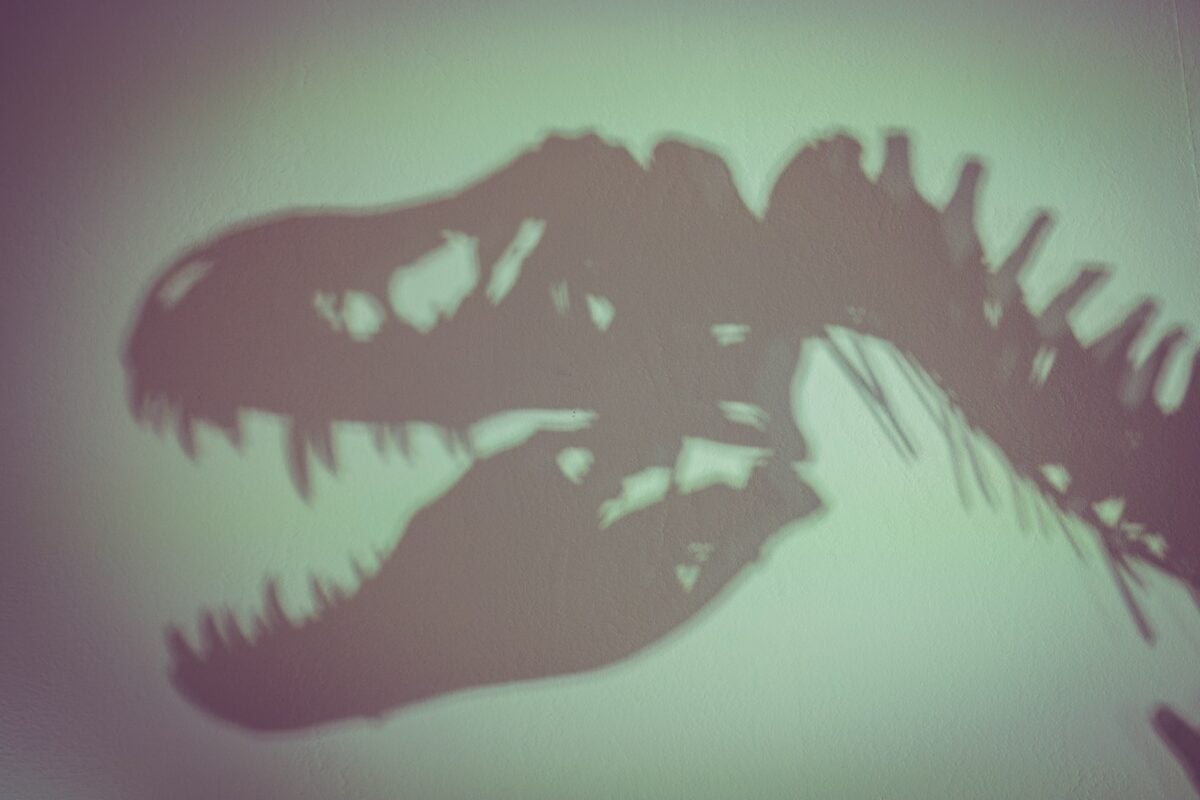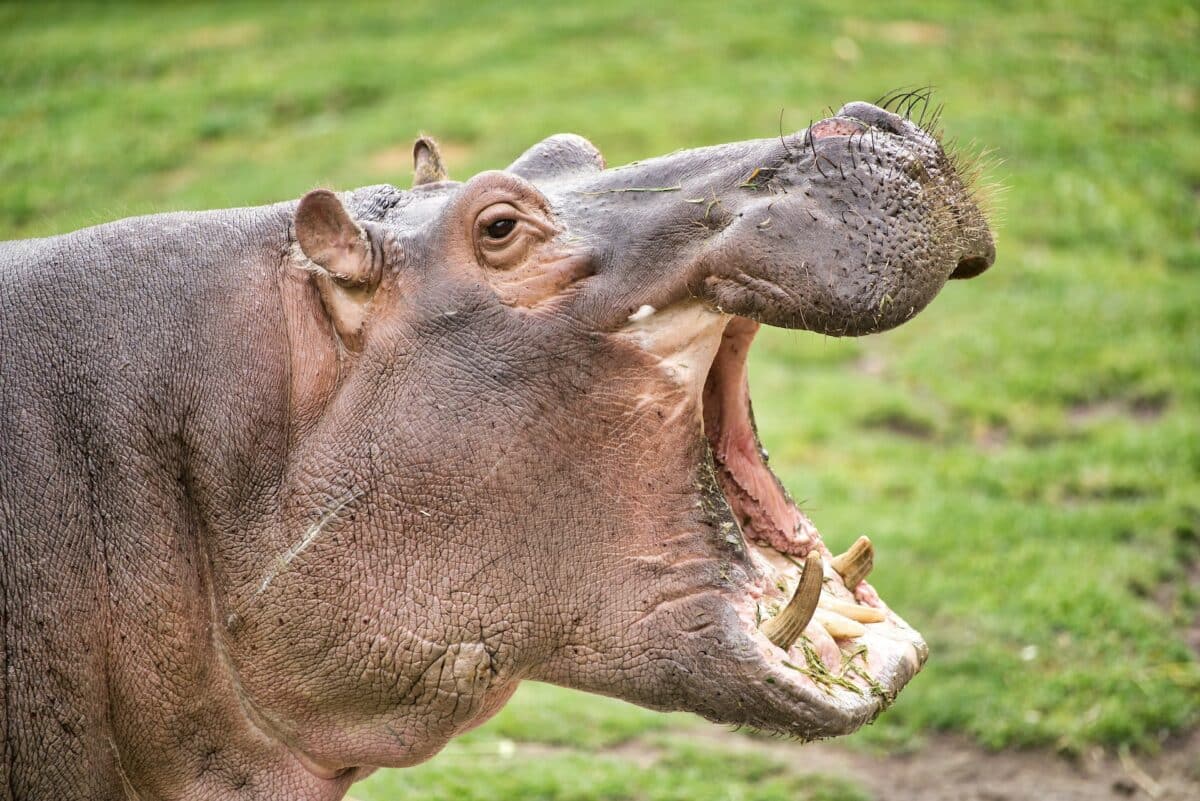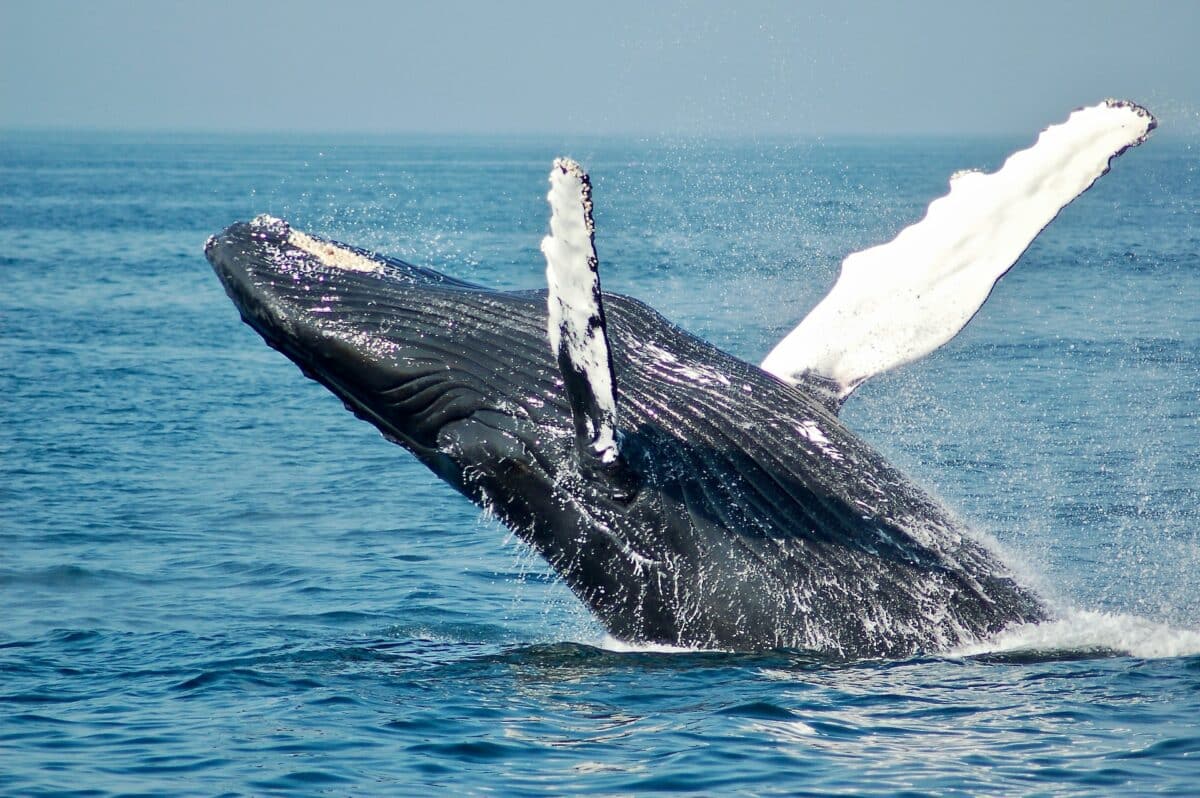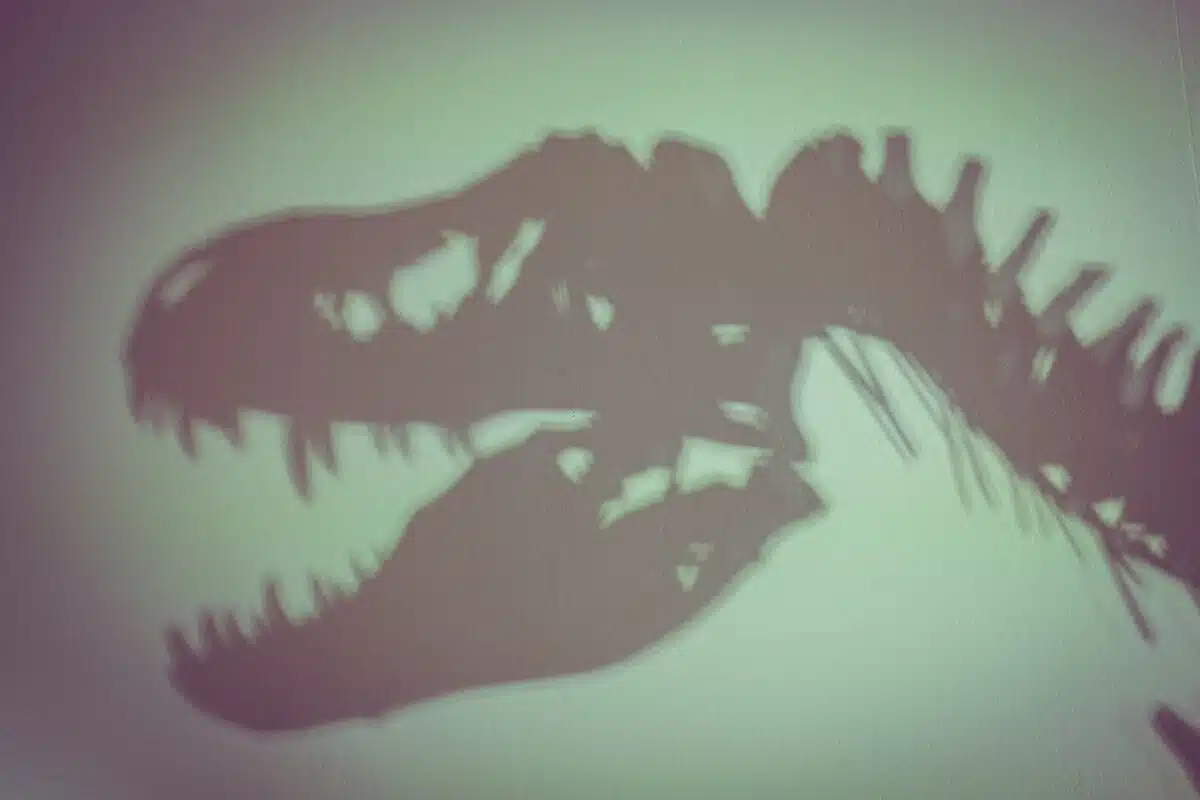Our planet has been home to many magnificent beasts who roamed the surface of the Earth millions and billions of years ago. Did you know 99% of all the beasts that have ever lived on this globe have gone extinct? The mighty Andrewsarchus is one of those species.
Species go extinct for various reasons, including climate change, habitat loss, and lack of food. After all, the world keeps evolving in terms of natural processes and human factors.

The animal species that live today differ greatly from those that have gone extinct. These prehistoric creatures had many unique features which made them stand out from the animals of today.
One such marvelous creature that has gone extinct is Andrewsarchus. It is one of the greatest and the most vicious mammals of the past. We’re actually really lucky that they’ve gone extinct. Had it been alive today, the world would have been a scary place to live in.
Keen to learn everything about Andrewsarchus? Keep reading with us to get to know this extinct creature of the past.
History
The history of the Andrewsarchus is quite fascinating. The first (and only) fossil discovery occurred in the spring of 1923 during a Central Asian Expedition. The American explorer Roy Chapman Andrews led the expedition and named this specimen after himself, Andrewsarchus. The specific name ‘mongoliensis’ refers to Mongolia, the location of the discovery.
Early studies classified this mammal as a mesonychid. This group of small carnivorous animals with hooves lived in the Paleocene. However, later studies classified them as artiodactyls. They are a family of ungulates. This is a category of animals that are able to support their weight with two of their five toes. The remaining toes are either vestigial or completely missing.
According to the research that ensued, the Andrewsarchus was a large carnivorous mammal estimated to be as tall as a modern-day horse. If the estimated skull size of Andrewsarchus is accurate, it would be the largest carnivorous mammal ever discovered.
The mammal was about 6ft 6in tall and 16 ft long. It weighed about 2200 pounds. That’s pretty big – bear in mind that modern brown bears weigh about 1400 pounds on average!
You might also like to read about beautiful long-leck dinos.
Physical Appearance of the Andrewsarchus
To date, the Andrewsarchus is the largest terrestrial carnivorous mammal based on its skull length. By comparing it with the Mesonyx mesonychid (another extinct mammal) palaeontologists were able to predict the size of the rest of its body.
Since the internal structure of Andrewsarchus is similar to that of Entelodonts, it would be more appropriate to follow the proportions of Entelodonts to estimate its size despite it being a mesonychid (although its classification later changed to artiodactyls).
The typical skull of the Andrewsarchus Mongoliensis has a basal length of 32.8 in (83.4 cm). Its long snout makes up 60% of this measurement. Its eye sockets were low and separated by a snout, coupled with a small longitudinal crest and shallow mandibular joint.
Moreover, the Andrewsarchus Mongoliensis had a complete dental structure. It consisted of three incisors, one canine, four premolars, and three molars on each side, like in canine species.
The incisors were arranged in a semicircle, while the elongated second and third molars had a crown. The crowns of the molars were quite wrinkled. Moreover, the first and second molars were more worn than the anterior and posterior teeth.
The molars were so similar to the Entelodonts’ that if they were found individually, they would be classified as such. They also had quite enlarged second incisors (as large as canines), which, although not preserved, can be estimated from their socket diameters.
Andrewsarchus Diet
Since the early discovery of the Andrewsarchus’s skull, there have been debates regarding its diet.
Based on its size and predatory anatomy, it is likely that it was a carnivore and preyed on other animals. Some scientists have suggested that it may have been an omnivore and also eaten plants. However, there is currently little evidence to back this theory.
Therefore, it is usually classified alongside other carnivorous mammals with hooves, such as mesonychids.
On the other hand, some professionals believe that Andrewsarchus was more of a scavenger and that they probably had different diets that included any prey available.
The discovery of this mammal’s skull took place in a prehistoric coastal area in Mongolia, which indicated that they probably fed on the prey available there, such as turtles, carrions, and shellfish. However, it may also have eaten fruits and other plant matter, making it similar to modern-day pigs.
Habitat
Andrewsarchus lived during the Eocene period, around 35 million years ago. This has been established from fossil remains found in central Asia, specifically in what is currently the Gobi Desert of Mongolia.
This suggests that it lived in a desert or semi-arid environment during the Eocene period. However, it is not certain what specific habitats the Andrewsarchus inhabited, as the fossil record from this time period is incomplete. Many questions about the ecology and behavior of this animal remain unanswered.
Despite its impressive size and predatory abilities, little is known about Andrewsarchus’s exact behavior and habits. It is unclear how it may have hunted or interacted with other animals in its ecosystem. However, some researchers have suggested that it may have been a solitary hunter. Others believe it may have lived in small groups or herds.
Given its size and dietary habits, it is likely that the Andrewsarchus was an apex predator in its ecosystem. It was most probably at the top of its food chain without any natural predators. This would have made it a dominant and essential part of the environment, as it would have played a crucial role in controlling the populations of other animals.
Extinction
As the climate changed and new species emerged, it is likely that the Andrewsarchus became less well-adapted to its environment and eventually went extinct. Today, all that remains of this massive creature are its fossilized remains, which continue to be studied by scientists to learn more about its life and behavior.
Andrewsarchus probably went extinct in the Eocene about 36 million years ago. It is not known for sure why Andrewsarchus went extinct. Like many other animals from the Eocene period, it was likely affected by a combination of factors, including climate change, competition with other species, and changes in the availability of food.
Even so, the fossil record from this time period is incomplete, so there may have been other factors that contributed to the extinction of Andrewsarchus that are not currently known.
If you are keen to find out more about the nature and appearance of Andrewsarchus, click here.
Animals Similar to the Andrewsarchus That Give Evidence of Its Lifestyle
Since little is known about this vicious creature, modern-day or prehistoric animals similar to Andrewsarchus may help us paint a better picture of these mammals. Let’s take a look at them!
Mesonychid
Mesonychid is a perfect example of an animal similar to the Andrewsarchus. However, it is now an extinct carnivorous ungulate as well that lived between 66 million to 39 million years ago.
Andrewsarchus was initially classified as a mesonychid due to its numerous similarities. As a result of further discoveries and debates, its classification has been changed to Artiodactyla.
Hippos

Hippos are similar to Andrewsarchus as they belong to the same order of Artiodactyla. The hoof, enormous head, and stumpy legs of a hippo are identical to that of the Andrewsarchus. However, the two differ slightly in terms of their size.
Whales

Whales also belong to the Artiodactyla order, the same as Andrewsarchus. Surprisingly, marine animals such as dolphins, porpoises, and whales are known to have evolved from hoofed animals like Andresarchus.
Archaeologists and experts are studying animals that are related to Andrewsarchus in order to understand their lifestyle and behavior while simultaneously comprehending the reason for their extinction.
Fun Facts About Andrewsarchus
Andrewsarchus is a relatively mysterious mammal and there are many knowledge gaps surrounding its existence. However, the few known facts about these mammals make them a rather fascinating species.
#1 Andrewsarchus Is Only Known By a Single Skull
To this date, only one skull of Andrewsarchus has been found, which indicates that it might have been a giant predator. At the same time, paleontologists could not find any remains of the body.
In contrast, the skull indicated that the Andrewsarchus belonged to a mammal species. However, without accurate knowledge of the Andrewsarchus’s body shape, it isn’t easy to be sure what type of animal it was. That is why this species has been a hotly debated topic over the years.
#2 Roy Chapman Andrews Discovered the First Fossil of Andrewsarchus.
In the 1920s, the intrepid paleontologist Roy Chapman Andrews undertook a series of famous fossil-hunting expeditions to Central Asia under the advocacy of the American Museum of Natural History. When Andrews discovered the fossil, it was named Andrewsarchus in his honor. To this day, it is uncertain whether Andrews invented the name himself or left the job to the other team members.
#3 Andrewsarchus Lived During the Eocene Epoch
One of the fantastic things about Andrewsarchus is that it lived during the Eocene, about 45-35 million years ago, when mammals were beginning to reach enormous size. The size of this predator suggests that mammals may have grown much larger and faster than previously thought. It also means that if Andrewsarchus had a predatory lifestyle, this region of Central Asia was teeming with herbivores of comparable size.
#4 Andrewsarchus Might Have Weighed Around Two Tonnes.
A simple extrapolation from the size of the skull makes it easy to conclude that the Andrewsarchus is the largest predatory land mammal of all time. However, it is not the largest predatory mammal overall. That recognition goes to prehistoric killer whales like the Leviathan, named after the biblical sea monster Leviathan. However, considering Andrewsarchus’ other less bulky body plan possibilities, its weight estimates drop dramatically.
#5 No One Can Prove That Andrewsarchus Was Muscular Or Had a Slender Build.
What kind of body did Andrewsarchus have besides a giant head? It’s easy to imagine a large mammal with a stout, muscular build. Still, the size of a massive skull doesn’t necessarily mean that the rest of the body is enormous. It’s important to remember that we don’t mean body size. Andrewsarchus may have had a relatively lean physique that knocked him off the top of the size chart and back in the middle of the Eocene ladder.
#6 It Is Possible That Andrewsarchus Had a Hump On Its Back.
Whether or not the Andrewsarchus was stout and graceful, its massive head must have been firmly fixed to his body. In similarly constructed animals, the musculature that attaches the skull to the spine creates a noticeable hump along the upper back, leading to a vaguely comic-looking, top-heavy build. Of course, we don’t know what kind of body was attached to the Andrewsarchus’ head, but it would be unsurprising if it had some sort of hump on its back.
#7 Andrewsarchus Was First Classified As Mesonyx.
For decades, paleontologists have speculated that Andrewsarchus was a prehistoric mammal known as a creodont – a family of carnivores typified by Mesonyx and leaving no living descendants. A series of reconstructions of his body from the better-known Mesonyx led some paleontologists to conclude that Andrewsarchus was a versatile predator.
#8 Paleontologists Are Speculating That Andrewsarchus Was An Even-Toed Hoofed Mammal.
A recent analysis of the skull of this mammal has given the theory of the Andrewsarchus as a creodont a near-fatal blow. Today, most paleontologists consider Andrewsarchus an artiodactyl, or straight-toed mammal, placed in the same general lineage as giant prehistoric pigs like Enteledon. However, there are objections that the Andrewsarchus was a whip morph, part of an evolutionary group that includes both modern whales and hippos.
#9 Andrewsarchus Had Surprisingly Strong Jaws.
You don’t need to be a biologist or scientist to conclude that the Andrewsarchus had powerful jaws. Otherwise, there would have been no justification for it to evolve into such a huge, elongated skull. Unfortunately, the lack of fossil evidence leaves paleontologists wondering just how strong this mammal’s bite was and how it compares to the much larger Tyrannosaurus Rex, which lived about 20 million years ago.
#10 What Did the Andrewsarchus Eat?
Given that its tooth structure, jaw musculature, and single skull have been found along the coast, some scientists believe that Andrewsarchus primarily lived on hard-shelled mollusks and turtles. However, whether the specimen landed on the beach naturally or by accident is uncertain. That’s why we can’t rule out the case that Andrewsarchus was omnivorous and perhaps supplemented its diet with algae and beached whales.
#11 Andrewsarchus’ Skull Is Three Times Longer Than The Canadian Timber Wolf.
Considering the fact that the Canadian timber wolf is one of the largest wolf subspecies, this is rather a fascinating fact regarding the Andrewsarchus.
#12 Andrewsarchus Has Featured on the Big Screens
Being featured in a series called “Walking With The Beasts” and in a game known as “Carnivores Ice Age,” Andrewsarchus is a beast whose name is well-known to the world.
Frequently Asked Questions About Andrewsarchus
Due to only a single fossil having been found, the Andrewsarchus’ existence is still shrouded in a cloud of mystery. Therefore we have gathered a list of the most frequently asked questions with answers to help resolve a few of your queries to the best of our abilities.
#1 Was the Andrewsarchus a Species of Dog?
Andrewsarchus was not a species of dog. In fact, it was not related to dogs in any way. Instead, it was a carnivorous mammal similar to hippos and whales according to its classifications.
#2 When and Where Did the Andrewsarchus Live?
Andrewsarchus was a creature of the middle Eocene epoch of the Paleogene Period. The species went extinct about 45 million years ago.
#3 Did the Andrewsarchus Belong to the Hyena Family?
Andrewsarchus was not from the hyena family, although you might have gotten this from their similarity in eating meat. After all, it has been suggested that they were scavengers, just like hyenas are. However, the fact that they were meat eaters cannot imply that the Andrewsarchus belongs to the hyena family. Instead, the Andrewsarchus is related to modern-day hooved animals such as goats and sheep rather than hyenas.
#4 What Was The Size of Andrewsarchus?
The limited fossil record has made it challenging to estimate the exact size of Andrewsarchus. However, speculations based on its relationship to other prehistoric ungulate mammals suggest that it was about 6ft tall at the shoulder and up to 12ft long.
They also weighed up to a whopping 2200 pounds. Based on these estimations, the Andrewsarchus is one of the largest carnivorous land mammals ever.
The Final Word on Andrewsarchus
To sum up, the Andrewsarchus was a seemingly ruthless carnivorous species of which we have very limited knowledge due to only a single fossil being discovered of this mammal.
Here’s a summary of all we know to date:
A BRIEF SUMMARY OF ANDREWSARCHUS | |
| Type | Mammal/Apex Predator |
| Weight | 2200 pounds |
| Height | 6ft 6in |
| Length | 16ft |
| Venomous | No |
| Aggression | Moderate |
| Origin | China |
| Number of Species | One |
| Special Feature | Giant Skull |
| Habitat | Coastal Area |
| Diet | Omnivore |
| Prey | Carrions, Shellfish, and Turtles |
| Fun Fact | One of the largest mammals to ever live |
| Distinctive Feature 1 | Hooved feet with only two weight-tolerance toes |
| Distinctive Feature 2 | Long snout with a massive skull |
The Andrewsarchus remains an essential part of the prehistoric world despite some controversies and theories. It continues to fascinate and intrigue those who study it.
It is still a mystery what this beast ate, what it looked like, where it lived, and generic stuff like that. However, scientists have confidently concluded that the Andrewsarchus was, in fact, one of the largest mammals ever to live.
In a nutshell, the Andrewsarchus is a fascinating prehistoric creature that caught the attention of paleontologists and the general public alike. Its massive size and unique physical characteristics were unlike any other animal of its time.
Although many questions remain unanswered about this prehistoric mammal we hope you’ve enjoyed the read! If you did you’re probably a dino-lover and will also enjoy or article on 14 Prehistoric Animals You Should Definitely Know About.
Join our Forum for free today!




